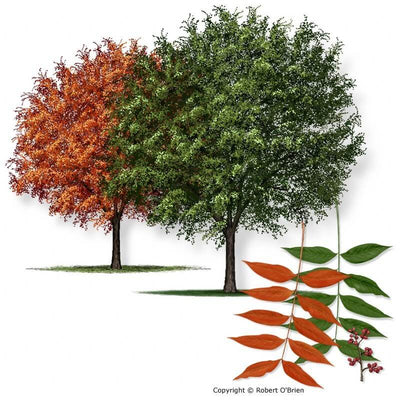Leek
Leek
Description: Leeks are biennial plants that are grown as annuals for their edible, elongated stems, known as "leeks." They have a cylindrical shape with a white, tender base that gradually transitions into green, leafy tops. The edible portion of the leek is the lower part of the stem, while the upper, dark green leaves are typically tougher and less desirable for culinary use. Leeks have a milder flavor compared to onions and garlic, making them a popular ingredient in soups, stews, and other savory dishes.
Size: The size of leeks can vary depending on the variety and growing conditions. On average, leeks can grow to lengths of 6 to 12 inches (15 to 30 centimeters) with a diameter of 1 to 2 inches (2.5 to 5 centimeters) at maturity. Some varieties may produce larger or smaller leeks, and the size can also be influenced by factors such as soil fertility, spacing, and watering.
Best Growing Zones: Leeks are cold-hardy biennials that are typically grown as annuals in USDA hardiness zones 7 through 10. They thrive in cool to moderate temperatures and are relatively tolerant of frost. Leeks prefer well-drained, fertile soil with a pH level between 6.0 and 7.0. They can be grown in full sun to partial shade but prefer cooler temperatures, especially during the growing season.
Soil Requirements: Leeks prefer loose, well-drained soil with plenty of organic matter. They perform best in soil that is rich in nutrients and has a slightly acidic to neutral pH level. Amending the soil with compost or well-rotted manure before planting can improve soil fertility and structure, promoting healthy leek growth. Leeks have shallow root systems and require consistent moisture throughout the growing season, but they do not tolerate waterlogged soil.
Planting and Care: Leeks are typically started from seeds indoors in early spring and transplanted into the garden once the soil has warmed and the danger of frost has passed. They can also be direct seeded in the garden, but this method may result in slower and less uniform germination. Leeks should be spaced 6 to 8 inches (15 to 20 centimeters) apart in rows with 12 to 18 inches (30 to 45 centimeters) between rows. They benefit from regular watering and should be kept consistently moist but not waterlogged. Leeks are relatively low-maintenance plants and require minimal care beyond regular watering and occasional fertilization.
Harvesting: Leeks can be harvested when they reach a desirable size, typically about 2 inches (5 centimeters) in diameter. The entire plant can be harvested by gently loosening the soil around the base of the stem and pulling the leek out of the ground. Alternatively, individual leeks can be harvested as needed by cutting them off at ground level with a sharp knife or scissors. Leeks can be stored in the refrigerator for several weeks or preserved by freezing or drying.



